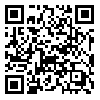BibTeX | RIS | EndNote | Medlars | ProCite | Reference Manager | RefWorks
Send citation to:
URL: http://rjms.iums.ac.ir/article-1-609-en.html
Background & Aim: Molecular epidemiology is the using of molecular techniques (e.g. Spoligotyping, RFLP VNTR) in order to study bacterial distribution in human populations. The aim of this study was to investigate the prevalence of all genotypes in M. tuberculosis strains typed by spoligotyping and to determine the associated risk factors in patients with different nationalities residing in Iran. Patients & Methods: In this analytic cross-sectional study a total number of 439 patients who referred to NRITLD (a referral tuberculosis center in Iran) were registered during March 21st 2003 to March 21st 2004. The isolated Mycobacterium tuberculosis strains were characterized by performing susceptibility tests against four first-line antituberculosis drugs and were then subjected to spoligotyping characterization. T-test and ch-square test were used for analysis of the data. Results: Spoligotyping of M. tuberculosis strains resulted in 140 different patterns divided into three evolutionary groups(I, II, III). 122(87.1%) of these spoligotype isolates were unique and reported for the first time. The remaining 18(12.8%) spoligotype patterns were previously reported from other geographical regions of the world. Haarlem family was more prevalent than other genotypes. Interestingly, 6.3% of the strains belonged to the Beijing family. MDR(multi drug resistance), double and triple resistance were seen in group I of evolutionary scenario. Antibiotic resistance was higher in those isolated from Afghan patients(P<0.001). Other risk factors such as sex and age were also contributing factors to the disease state. Conclusion: Results showed that multi-drug-resistance was more prevalent in bacteria isolated from Afghan TB patients residing in Iran. In addition, the spread of M. tuberculosis strains belonging to Beijing family among Iranian patients has to be considered seriously. It is also important to undertake studies to identify which factors are the most significant to consider in tuberculosis control program.





